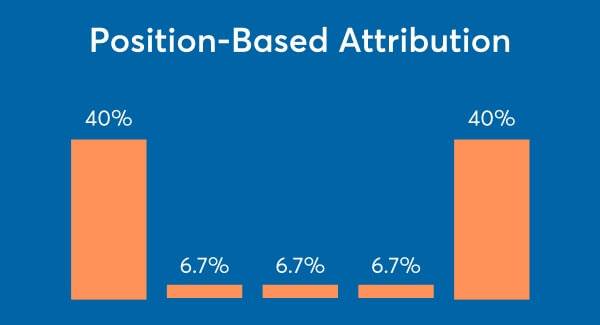Whether you’re a business owner or a marketer looking for ways to optimize your campaigns, this blog will provide valuable insights into measuring the effectiveness of your marketing efforts. So without further ado, let’s dive in!
Introduction to Marketing ROI
The concept of marketing ROI is crucial for businesses that want to measure the impact of their marketing efforts on revenue growth and profit. In this blog’s first section, readers will understand what marketing ROI is and why it’s essential. The subsequent sections will delve into the details of calculating marketing ROI, setting benchmarks, predicting future ROI, direct vs indirect revenue attribution, and limitations. The reader will also learn how to create a comprehensive measurement plan for different marketing channels and calculate ROI for content marketing.
With this knowledge, businesses can determine the returns generated by their marketing campaigns and adjust their strategies to improve their ROI. Overall, this blog aims to help marketers and businesses understand how to measure the ROI of marketing effectively and make informed decisions about their marketing budget.

The Basic Calculation of Marketing ROI
The second section of this blog covers the foundational calculation of Marketing ROI. It explains that the simplest way to measure ROI is by taking the revenue growth from a marketing campaign and subtracting the cost of goods to deliver a product. This resulting number is then divided by the total investment. The article also highlights the importance of adding the cost of marketing activities to the equation.
Overall, the basic marketing ROI formula is simple to calculate and should be a starting point for any measurement plan. By diving into more complex methods, marketers can gain deeper insights into their campaigns and plan for future success.
Setting a Benchmark for a Good ROI
After calculating the ROI of a marketing campaign, the next step is to set a benchmark for what constitutes a “good ROI” for that specific strategy. This can be achieved by analyzing the return from similar tactics and evaluating the overall industry benchmarks. By setting a benchmark, marketers can establish a target to measure the success of their campaign and determine if it was worth the investment. It’s important to note that the benchmark may vary depending on the industry, audience, and objectives of the campaign.
However, with a well-established benchmark, marketers can confidently analyze the results and make informed decisions for future campaigns. By staying optimistic and utilizing factual data, businesses can achieve a positive return on investment and drive success through their marketing efforts.
Predicting Future ROI
In order to continuously grow a business, it is important to accurately predict future ROI. One can estimate the ROI of a marketing campaign by understanding the potential customers being targeted, conversion rates, and average purchase prices. This section will explore how to predict future ROI and the importance of setting a benchmark for what qualifies as a good ROI. It is crucial to understand that ROI is not solely about revenue growth but also about profit growth. Marketers can use various metrics to accurately calculate the ROI of their marketing tactics and determine if they are contributing to overall business growth.
By having a firm grasp on future expenses, marketers can more accurately predict future ROI and make informed decisions about marketing investments.

Direct vs. Indirect Revenue Attribution
Direct and indirect revenue attribution are two commonly used methods for calculating marketing ROI. Direct attribution involves attributing all of the revenue generated to a single marketing campaign or initiative. On the other hand, indirect attribution assigns a portion of the revenue to each touchpoint or marketing channel that contributed to the conversion. Both methods have their advantages and limitations, and choosing the right approach depends on the marketing goals and objectives. It is important to note that the choice of attribution model can significantly impact the calculation of ROI.
Therefore, it is crucial to have a comprehensive measurement plan that takes into account all relevant factors and variables to accurately measure the effectiveness of marketing efforts. Marketers can leverage the best approach to optimize their ROI and drive business growth by understanding the differences between direct and indirect revenue attribution.
Calculation Example
After understanding the basics of calculating marketing ROI, it’s time to put it into practice with a calculation example. Let’s say a company spent $100,000 on a marketing campaign and saw an increase in sales revenue of $200,000. Using the formula ROI = (Gains – Cost)/Cost, the ROI for this particular campaign would be 100%. While this may seem like a good ROI, it’s important to consider other factors, such as the cost of goods and ongoing expenses.
Marketers can better understand their campaign’s success by setting a benchmark for a good ROI and considering direct versus indirect revenue attribution. It’s important to keep in mind the limitations of a simple ROI calculation and to create a comprehensive measurement plan that can accurately track ROI across different channels. By accurately measuring ROI, marketers can make informed decisions and optimize their campaigns for maximum success.
ROI of Marketing Campaign
The ROI of a marketing campaign is a crucial element in measuring the success of a marketing strategy. As discussed earlier in this blog, the basic calculation of marketing ROI involves subtracting the total cost from the total revenue generated. However, setting a benchmark for a good ROI and considering variables such as direct versus indirect revenue attribution is important.
To calculate the ROI of a specific marketing campaign, one can take the change in revenue after the campaign has deployed, subtract how much was spent on it, and then divide by the cost. It is important to note that this simple ROI calculation has limitations, and marketers should consider creating a comprehensive measurement plan that includes different channels and tactics. When calculating the ROI for content marketing, it is essential to consider the revenue generated and the long-term benefits, such as increased brand awareness and customer loyalty.
Overall, while measuring marketing ROI may seem daunting, it is a critical component in assessing the effectiveness of a marketing campaign and predicting future success.
Limitations of Simple ROI Calculation
The ROI of a marketing campaign is a crucial element in measuring the success of a marketing strategy. As While the simple calculation of ROI is a useful starting point for measuring the effectiveness of marketing campaigns, there are limitations to this approach. Section 7 of the blog explores these limitations in more detail. One of the main drawbacks is that it needs to account for factors such as the time it takes for returns to materialize or the impact of external variables like economic conditions or competitor actions.
Additionally, the simple ROI calculation does not take into account the specific type of marketing activity or how it may impact different customer segments. This is where direct and indirect revenue attribution comes into play, which is covered in section 5. While there are limitations to simple ROI calculation, it is important for marketers to understand them to ensure that they accurately measure the return on their marketing investments. By approaching ROI measurement from multiple angles, including setting benchmarks for a good ROI and predicting future ROI, marketers can create a comprehensive measurement plan that provides a more accurate picture of the effectiveness of their marketing campaigns.

Measuring Marketing ROI for Different Channels
Measuring marketing ROI for different channels can be challenging, but it is a crucial step in determining the effectiveness of each campaign. It involves collecting data from various channels, including email marketing, social media, PPC, and content marketing. By analyzing these metrics, marketers can identify which channels have the highest ROI and make data-driven decisions on allocating their marketing budget. Furthermore, by tracking the ROI of each channel over time, marketers can adjust their strategies to optimize performance and maximize revenue.
Overall, measuring marketing ROI for different channels is essential to any comprehensive measurement plan and can significantly improve marketing campaigns’ effectiveness and profitability.
Therefore, it is crucial to have a comprehensive measurement plan that takes into account all relevant factors and variables to accurately measure the effectiveness of marketing efforts. Marketers can leverage the best approach to optimize their ROI and drive business growth by understanding the differences between direct and indirect revenue attribution.
Creating a Comprehensive Measurement Plan
Once you understand the basic calculation of marketing ROI, it’s time to create a comprehensive measurement plan. This includes identifying and determining key performance indicators (KPIs) aligning with your business objectives. As you measure ROI for different marketing channels, it’s important to consider direct and indirect revenue attribution and any limitations of simple ROI calculations. When it comes to measuring the ROI of content marketing, you can assess the value of your on-site content through organic traffic generation and engagement metrics.
By understanding the “whys” behind your marketing efforts, along with any soft or vanity metrics that may contribute to ROI, you can refine and optimize your marketing plan for maximum impact.
Calculating ROI for Content Marketing
When it comes to content marketing, calculating ROI can be a daunting task. However, it is crucial to evaluate the effectiveness of your strategy and make data-driven decisions to optimize your campaigns’ performance. This section will discuss how to calculate ROI specifically for content marketing. As mentioned earlier, the formula for calculating content marketing ROI is straightforward – revenue from content minus content marketing spend divided by spend.
Additionally, it is recommended to multiply the average transaction amount by the average number of people that converted due to your content and became customers. While this may give you a vague calculation, it can help you estimate your return on investment more accurately. It is important to note that measuring content marketing ROI is not limited to revenue generation. It can also be measured through other benefits, such as increased web traffic, brand awareness, and customer engagement.
Ultimately, a comprehensive measurement plan that considers all aspects of content marketing can provide valuable insights to improve your strategy and boost ROI.

Conclusion
In conclusion, measuring the ROI of marketing is a critical aspect of any business strategy. Businesses can determine the effectiveness of their marketing campaigns by understanding the basic calculation of marketing ROI, setting benchmarks for good ROI, predicting future ROI, and attributing revenue correctly. While the limitations of simple ROI calculation exist, creating a comprehensive measurement plan can help businesses overcome these challenges.
Furthermore, measuring marketing ROI for different channels and content marketing plays a significant role in determining the profitability and efficiency of marketing campaigns.
Overall, with the right metrics and measurement plan in place, businesses can showcase their marketing ROI and make informed decisions to maximize their profits.
Frequently Asked Questions
Why do we measure marketing ROI?
Measuring marketing ROI is crucial because it allows businesses to determine the effectiveness and efficiency of their marketing efforts. It provides insights into the return generated from marketing investments, helping companies make data-driven decisions, optimize strategies, and allocate resources effectively.
What is ROI in marketing?
ROI in marketing refers to the Return on Investment generated from marketing activities. It is a metric used to assess the profitability and success of marketing campaigns by comparing the gain from the investment to the cost of the investment. ROI helps businesses understand the financial impact of their marketing efforts and make informed decisions about resource allocation.
What is ROI in marketing measurement?
ROI in marketing measurement refers to the process of evaluating the financial returns generated from marketing activities. It involves analyzing the impact of marketing initiatives on revenue growth, profitability, customer acquisition, and customer retention. ROI measurement provides insights into the effectiveness of marketing strategies, enabling businesses to optimize their efforts and drive better results
How do you use ROI in marketing?
ROI is used in marketing to assess the success and effectiveness of marketing campaigns and strategies. By measuring ROI, businesses can evaluate the return generated from their marketing investments, identify the most impactful channels and tactics, optimize budget allocation, and make data-driven decisions to drive business growth. ROI serves as a guide for marketers to allocate resources effectively, improve campaign performance, and maximize the impact of their marketing efforts.



